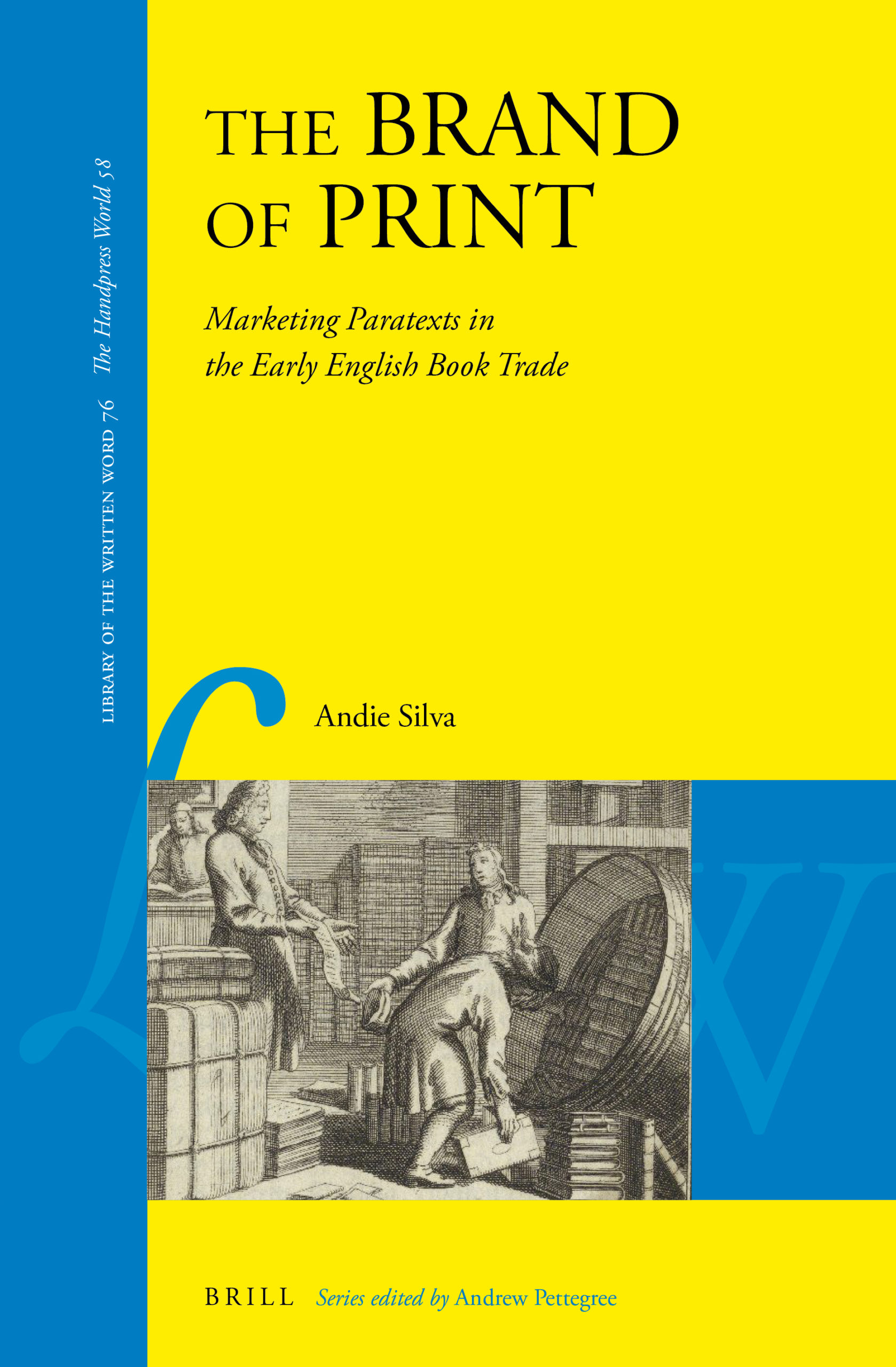*Disclaimer: the author of the book is the current editor of SHARP News, however she did not procure nor edit this review in any way.*
In a year where bookcase credibility has become a crucial part of academic life, with towers of texts teetering into every Zoom call, Andie Silva’s insistence on the book as cultural commodity in this thought-provoking and innovative monograph is particularly resonant. From the introduction, the originality of Silva’s work becomes apparent as she productively combines contemporary marketing theory and book history. Sidestepping the focus upon the author found in Erne and Kastan, Silva places our attention firmly on “print agents” – a capacious term which here includes printers, publishers, editors, translators, stationers, and book sellers. By exploring the actions of these print agents through marketing theory, this wide-ranging, perceptive book draws together both market choices and cultural value, convincingly and cogently linking the commercial and rhetorical characteristics of the early modern marketplace of books and ideas. Silva challenges the distinctions that often stymie early modern book history: between reading for profit and reading for pleasure, literary and non-literary texts, canonical woks and printed ephemera, manuscript and print.





